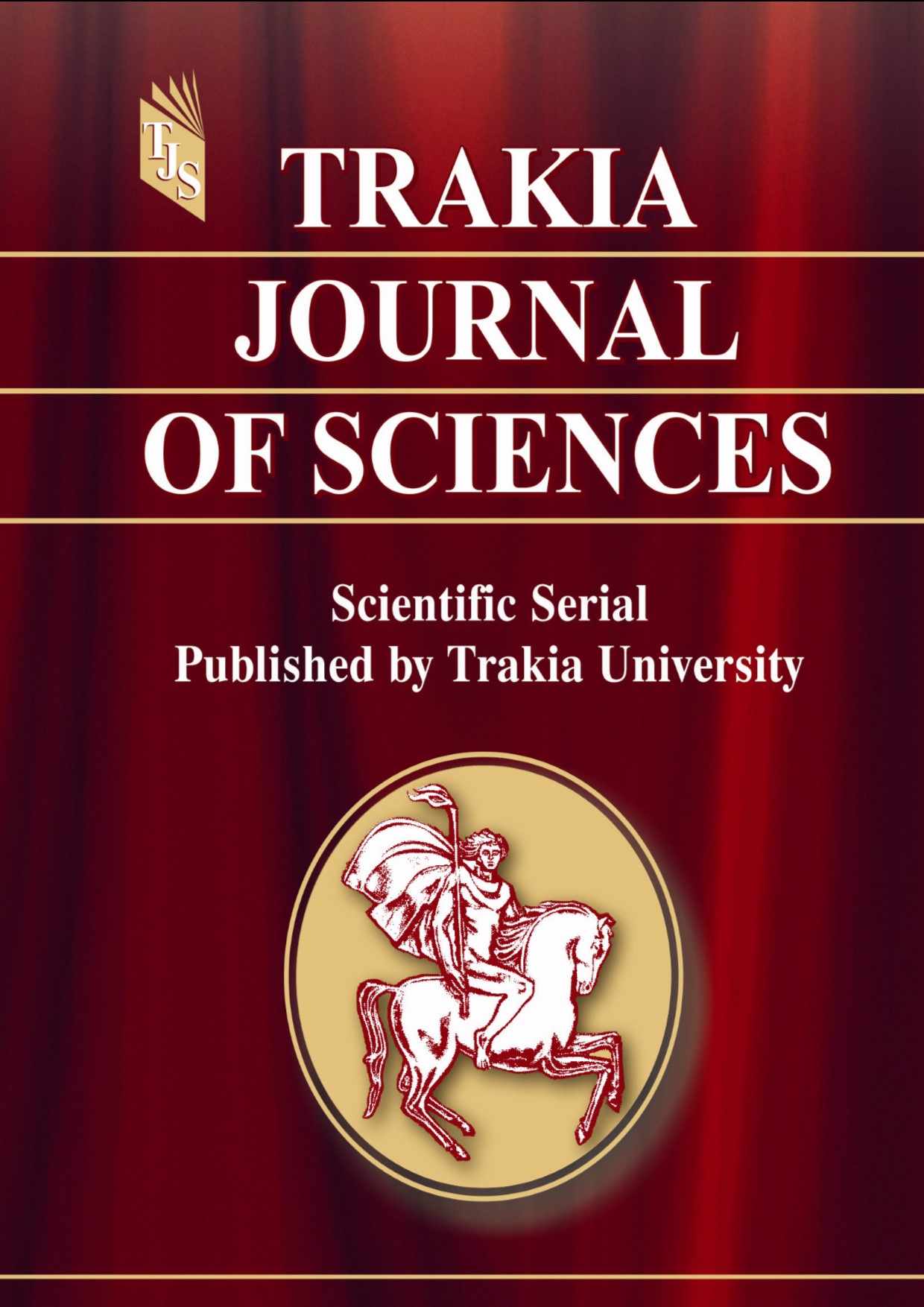THE ROLE OF PATENT BLUE V IN REVERSE AXILLARY MAPPING IN PATIENTS UNDERGOING SENTINEL AXILLARY LYMPH NODE BIOPSY FOR BREAST CANCER - INITIAL RESULTS
DOI:
https://doi.org/10.15547/tjs.2024.03.008Keywords:
breast cancer, sentinel lymph node biopsy, ICG, Patent Blue VAbstract
Purpose: The main purpose of this study is to research the initial experience with Patent Blue V as a tracer for reverse axillary mapping during sentinel lymph node biopsy for breast cancer and look into the lymphedema rates. Methods: We analyzed the first consecutive patients who underwent sentinel axillary lymph node dissection with ICG in combination with reverse axillary mapping with Patent Blue V for the period from May 2023 to January 2024 at our clinic. Results: Thirteen patients were included. Patent Blue V (reverse axillary mapping tracer) was found intraoperatively in only two patients (15%). ICG (sentinel lymph node biopsy tracer) was found in 100% of the patients. No lymphedema of upper limb was found with a mean follow-up of 4.2 months. Conclusions: The use of Patent Blue V seems not to be an efficient method for reverse axillary mapping with a success rate of 15% in this study. The use of another tracker for reverse axillary mapping is appropriate. However, no upper extremity lymphedema is reported in patients after sentinel lymph node biopsy in this study.
References
S. Zahoor, A. Haji, A. Battoo, M. Qurieshi, W. Mir, and M. Shah, “Sentinel Lymph Node Biopsy in Breast Cancer: A Clinical Review and Update,” jbc, vol. 20, no. 3, pp. 217–227, Sep. 2017, doi: 10.4048/jbc.2017.20.3.217.
F. Cardoso et al., “Early breast cancer: ESMO Clinical Practice Guidelines for diagnosis, treatment and follow-up†,” Ann. Oncol., vol. 30, no. 8, pp. 1194–1220, Aug. 2019, doi: 10.1093/annonc/mdz173.
M. L. Telli, W. J. Gradishar, and J. H. Ward, “NCCN Guidelines Updates: Breast Cancer,” J. Natl. Compr. Cancer Netw. J Natl Compr Canc Netw, vol. 17, no. 5.5, pp. 552–555, 2019, doi: 10.6004/jnccn.2019.5006.
U. Veronesi et al., “Sentinel Lymph Node Biopsy in Breast Cancer: Ten-Year Results of a Randomized Controlled Study,” Ann. Surg., vol. 251, no. 4, 2010, [Online]. Available: https://journals.lww.com/annalsofsurgery/fulltext/2010/04000/sentinel_lymph_node_biopsy_in_breast_cancer_.3.aspx.
A. D. Purushotham et al., “Morbidity after sentinel lymph node biopsy in primary breast cancer: results from a randomized controlled trial.,” J. Clin. Oncol. Off. J. Am. Soc. Clin. Oncol., vol. 23, no. 19, pp. 4312–4321, Jul. 2005, doi: 10.1200/JCO.2005.03.228.
T. Ashikaga et al., “Morbidity results from the NSABP B-32 trial comparing sentinel lymph node dissection versus axillary dissection,” J. Surg. Oncol., vol. 102, no. 2, pp. 111–118, Aug. 2010, doi: https://doi.org/10.1002/jso.21535.
G. Gill and T. S. T. G. of the R. A. C. of S. (RACS) and N. C. T. Centre, “Sentinel-Lymph-Node-Based Management or Routine Axillary Clearance? One-Year Outcomes of Sentinel Node Biopsy Versus Axillary Clearance (SNAC): A Randomized Controlled Surgical Trial,” Ann. Surg. Oncol., vol. 16, no. 2, pp. 266–275, 2009, doi: 10.1245/s10434-008-0229-z.
P. Del Bianco et al., “Morbidity comparison of sentinel lymph node biopsy versus conventional axillary lymph node dissection for breast cancer patients: Results of the sentinella–GIVOM Italian randomised clinical trial,” Eur. J. Surg. Oncol., vol. 34, no. 5, pp. 508–513, May 2008, doi: 10.1016/j.ejso.2007.05.017.
R. E. Mansel et al., “Randomized Multicenter Trial of Sentinel Node Biopsy Versus Standard Axillary Treatment in Operable Breast Cancer: The ALMANAC Trial,” JNCI J. Natl. Cancer Inst., vol. 98, no. 9, pp. 599–609, May 2006, doi: 10.1093/jnci/djj158.
U. Veronesi et al., “A Randomized Comparison of Sentinel-Node Biopsy with Routine Axillary Dissection in Breast Cancer,” N. Engl. J. Med., vol. 349, no. 6, pp. 546–553, Aug. 2003, doi: 10.1056/NEJMoa012782.
D. N. Krag et al., “Sentinel-lymph-node resection compared with conventional axillary-lymph-node dissection in clinically node-negative patients with breast cancer: overall survival findings from the NSABP B-32 randomised phase 3 trial.,” Lancet. Oncol., vol. 11, no. 10, pp. 927–933, Oct. 2010, doi: 10.1016/S1470-2045(10)70207-2.
S. G. Rockson, “Lymphedema after Breast Cancer Treatment,” N. Engl. J. Med., vol. 379, no. 20, pp. 1937–1944, Nov. 2018, doi: 10.1056/NEJMcp1803290.
J. M. Armer and B. R. Stewart, “Post-breast cancer lymphedema: incidence increases from 12 to 30 to 60 months.,” Lymphology, vol. 43, no. 3, pp. 118–127, Sep. 2010.
N. R. Taghian, C. L. Miller, L. S. Jammallo, J. O’Toole, and M. N. Skolny, “Lymphedema following breast cancer treatment and impact on quality of life: A review,” Crit. Rev. Oncol. Hematol., vol. 92, no. 3, pp. 227–234, 2014, doi: https://doi.org/10.1016/j.critrevonc.2014.06.004.
A. Zada et al., “Meta-analysis of sentinel lymph node biopsy in breast cancer using the magnetic technique,” Br. J. Surg., vol. 103, no. 11, pp. 1409–1419, Oct. 2016, doi: 10.1002/bjs.10283.
N. Wei et al., “Sentinel lymph node biopsy with carbon nanoparticle suspension after neoadjuvant chemotherapy for breast cancer patients.,” Ann. R. Coll. Surg. Engl., vol. 103, no. 10, pp. 752–756, Nov. 2021, doi: 10.1308/rcsann.2021.0084.
X. Qin, M. Yang, and X. Zheng, “Comparative study of indocyanine green combined with blue dye with methylene blue only and carbon nanoparticles only for sentinel lymph node biopsy in breast cancer,” astr, vol. 97, no. 1, pp. 1–6, Jun. 2019, doi: 10.4174/astr.2019.97.1.1.
T. Sugie et al., “Evaluation of the Clinical Utility of the ICG Fluorescence Method Compared with the Radioisotope Method for Sentinel Lymph Node Biopsy in Breast Cancer.,” Ann. Surg. Oncol., vol. 23, no. 1, pp. 44–50, Jan. 2016, doi: 10.1245/s10434-015-4809-4.
J. Goonawardena, C. Yong, and M. Law, “Use of indocyanine green fluorescence compared to radioisotope for sentinel lymph node biopsy in early-stage breast cancer: systematic review and meta-analysis,” Am. J. Surg., vol. 220, no. 3, pp. 665–676, 2020, doi:https://doi.org/10.1016/j.amjsurg.2020.02.001.
C. L. Nguyen et al., “Novel Dual Tracer Indocyanine Green and Radioisotope Versus Gold Standard Sentinel Lymph Node Biopsy in Breast Cancer: The GREENORBLUE Trial,” Ann. Surg. Oncol., vol. 30, no. 11, pp. 6520–6527, 2023, doi: 10.1245/s10434-023-13824-6.
S. Jena, S. Bhattacharya, A. Gupta, and N. K. Sinha, “Axillary Reverse Mapping in Patients Undergoing Axillary Lymph Node Dissection: A Single Institution Experience From India.,” Cureus, vol. 13, no. 7, p. e16462, Jul. 2021, doi: 10.7759/cureus.16462.
A. Puthangot, C. Chintamani, and M. Tandon, “Evaluation of Axilla With Sentinel Lymph Node Biopsy (Using Methylene-Blue) and Reverse Axillary Mapping (Using Fluorescein) to Validate Optimum and Safe Axillary Dissection in Breast Cancer.,” Cureus, vol. 15, no. 9, p. e45267, Sep. 2023, doi: 10.7759/cureus.45267.
R. Cirocchi et al., “New classifications of axillary lymph nodes and their anatomical-clinical correlations in breast surgery,” World J. Surg. Oncol., vol. 19, no. 1, p. 93, 2021, doi: 10.1186/s12957-021-02209-2.
J. W. Han, Y. J. Seo, J. E. Choi, S. H. Kang, Y. K. Bae, and S. J. Lee, “The efficacy of arm node preserving surgery using axillary reverse mapping for preventing lymphedema in patients with breast cancer.,” J. Breast Cancer, vol. 15, no. 1, pp. 91–97, Mar. 2012, doi: 10.4048/jbc.2012.15.1.91.
A. H. Narasannaiah et al., “Reverse Axillary Mapping in Breast Cancer Using Blue Dye: A Tertiary Setup Experience.,” Cureus, vol. 13, no. 10, p. e18576, Oct. 2021, doi: 10.7759/cureus.18576.
M. A. Beek, P. D. Gobardhan, E. G. Klompenhouwer, H. J. T. Rutten, A. C. Voogd, and E. J. T. Luiten, “Axillary reverse mapping (ARM) in clinically node positive breast cancer patients.,” Eur. J. Surg. Oncol. J. Eur. Soc. Surg. Oncol. Br. Assoc. Surg. Oncol., vol. 41, no. 1, pp. 59–63, Jan. 2015, doi: 10.1016/j.ejso.2014.09.012.
C. Boneti et al., “Scientific Impact Award: Axillary reverse mapping (ARM) to identify and protect lymphatics draining the arm during axillary lymphadenectomy.,” Am. J. Surg., vol. 198, no. 4, pp. 482–487, Oct. 2009, doi: 10.1016/j.amjsurg.2009.06.008.
X. Shao, B. Sun, and Y. Shen, “Axillary reverse mapping (ARM): where to go,” Breast Cancer, vol. 26, no. 1, pp. 1–10, 2019, doi: 10.1007/s12282-018-0886-0.
M. C. Peek, T. Kovacs, R. Baker, H. Hamed, A. Kothari, and M. Douek, “Is blue dye still required during sentinel lymph node biopsy for breast cancer?,” Ecancermedicalscience, vol. 10, p. 674, 2016, doi: 10.3332/ecancer.2016.674.

Downloads
Published
Issue
Section
License
Copyright (c) 2024 Trakia University

This work is licensed under a Creative Commons Attribution-NonCommercial 4.0 International License.


